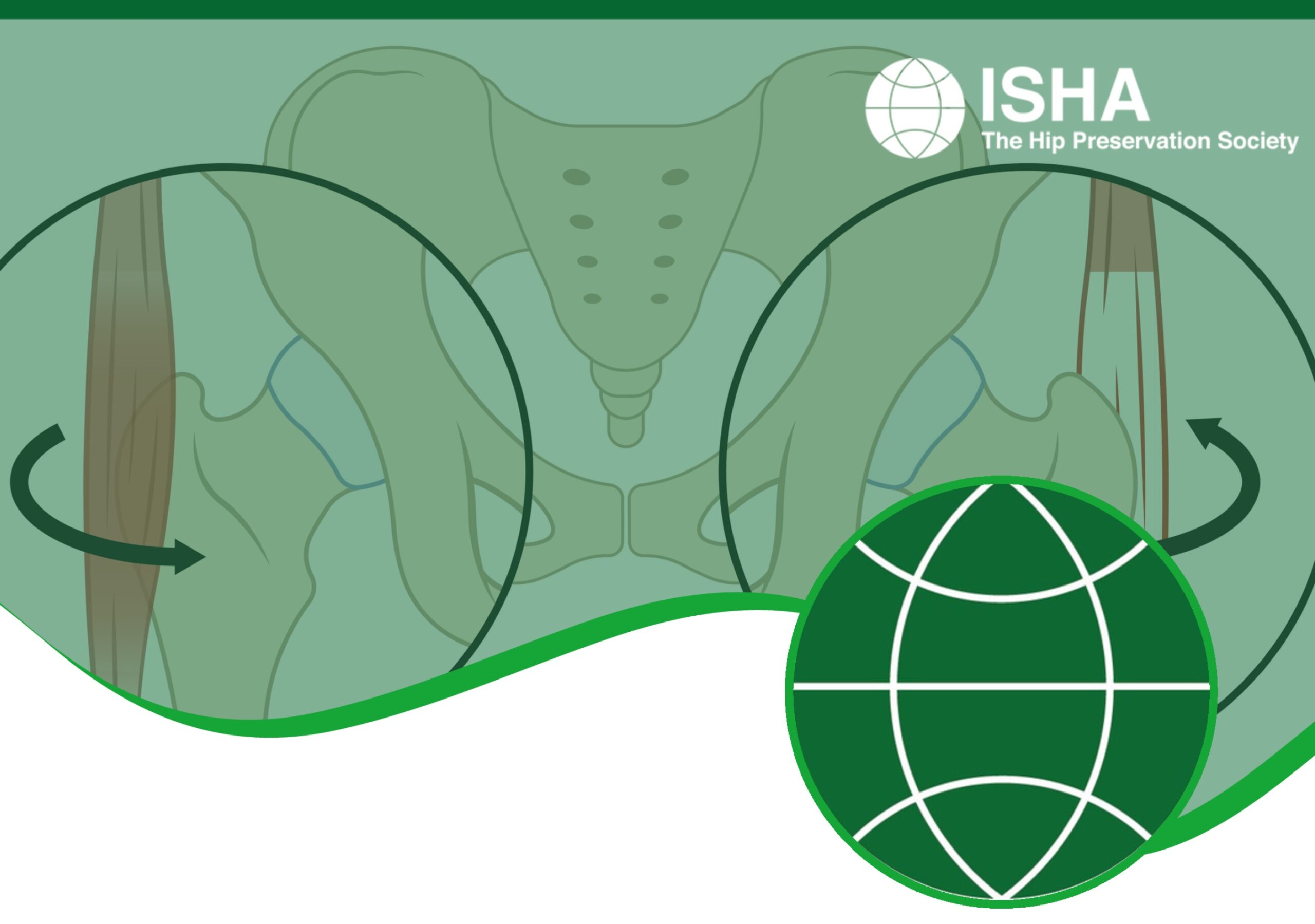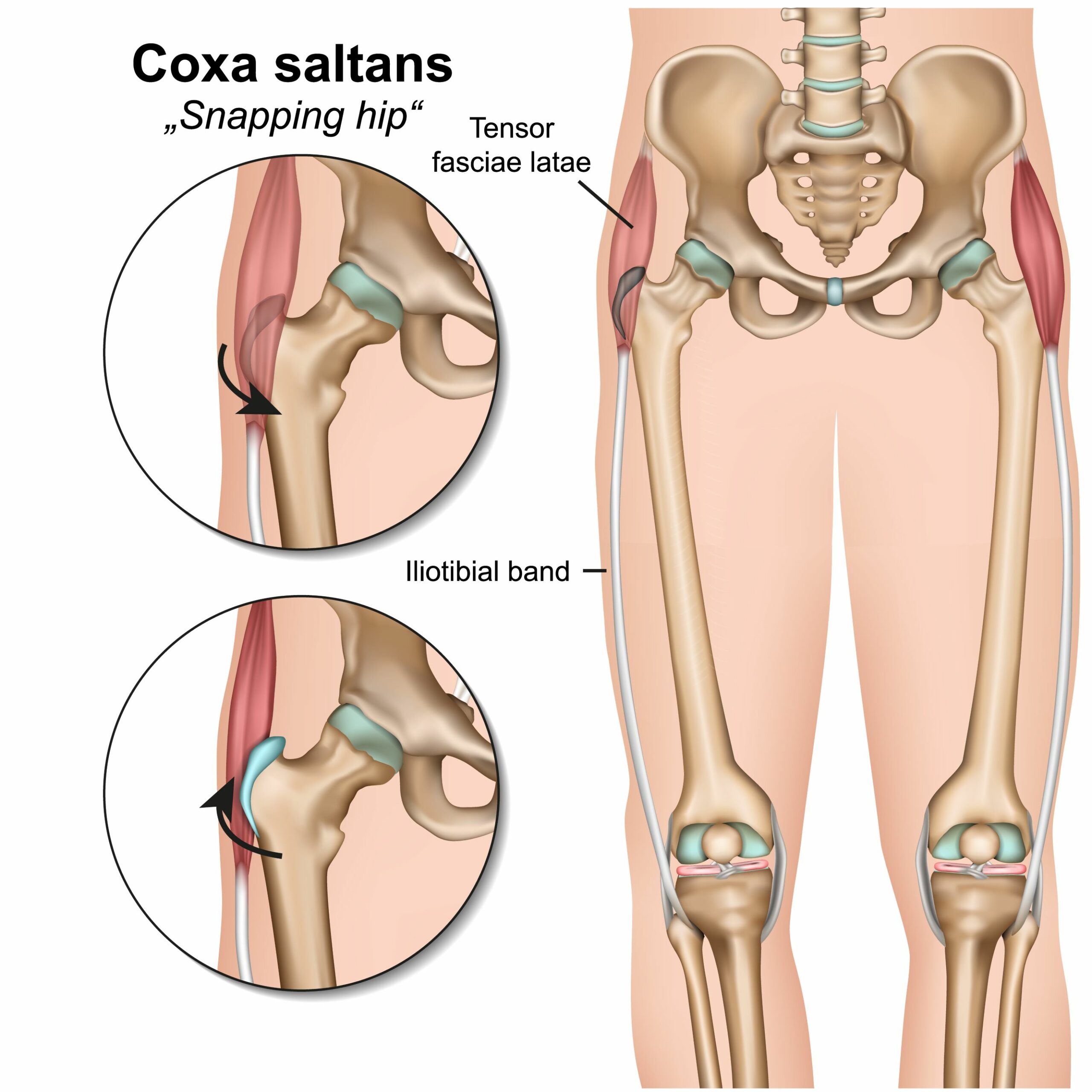
Patient Information from ISHA – The Hip Preservation Society
Snapping Hip Syndrome
Snapping Hip Syndrome

Definition
Snapping hip, also known as “coxa saltans”, or “dancer’s hip”, is characterised by a usually painless sensation of popping or snapping during certain hip movements, including walking, getting up from sitting, or during rotational movements. This condition may develop from overuse and is often associated with individuals performing repetitive movements, such as in ballet dancers, weightlifters, soccer players and runners. It is slightly more common in females and can affect both hips.
The snapping, which can be described as internal or external, occurs when a muscle or tendon moves over a bony point around the hip (see table for further details).
| Snapping Hip Syndrome | Hip movement | Affected tendon | Bony point |
| Internal | Flexion or extension | Iliopsoas tendon | Lesser trochanter, femoral head or iliopubic emminence |
| External (Most Common) | Flexion, extension, external or internal rotation | Iliotibial band | Greater Trochanter |
Diagnosis
Snapping hip is most likely to become evident during a physical examination. Individuals are often able to pinpoint the location of the problem and reproduce the symptoms at will. Once confirmed as the likely diagnosis, imaging including X-rays, MRI and ultrasound guided local anaesthetic injection may be performed to check for damage to any other structures. When there is no pain, treatment will not be necessary, but when the snapping is symptomatic or if other areas of pain around the hip are present, a range of treatments may be discussed.
Non-Surgical Treatment
In the first instance, conservative measures such as rest, activity modification, anti-inflammatory medication, steroid injections, and physiotherapy often provide relief from pain.
Surgical Treatment

The following procedures may be suggested by a hip preservation surgeon for the management of snapping hip syndrome:
- Release or lengthening of the iliotibial band or release of the gluteus maximus
- Release or lengthening of the iliopsoas tendon
Surgical procedures to treat snapping hip syndrome may be performed via an open or arthroscopic approach, but the latter is generally the preferred option by hip preservation surgeons. Other hip problems may coexist with this condition, so surgical treatment for those may also need consideration.
What to expect after surgery

Recovery following arthroscopic surgery is generally quicker than after an open procedure and hence returning to activities is also easier. Any return to sport will also depend on operative findings and advice will be provided by the treating hip preservation surgeon and physiotherapist.
There may be limitations to weightbearing and activities during the first two or three months, which will vary amongst surgeons and will depend on operative findings and techniques performed.
Physiotherapy can begin after surgery, gradually increasing range of movement, stability, strength, mobility and function over a period of up to six months, depending on the surgery performed and individual aims.